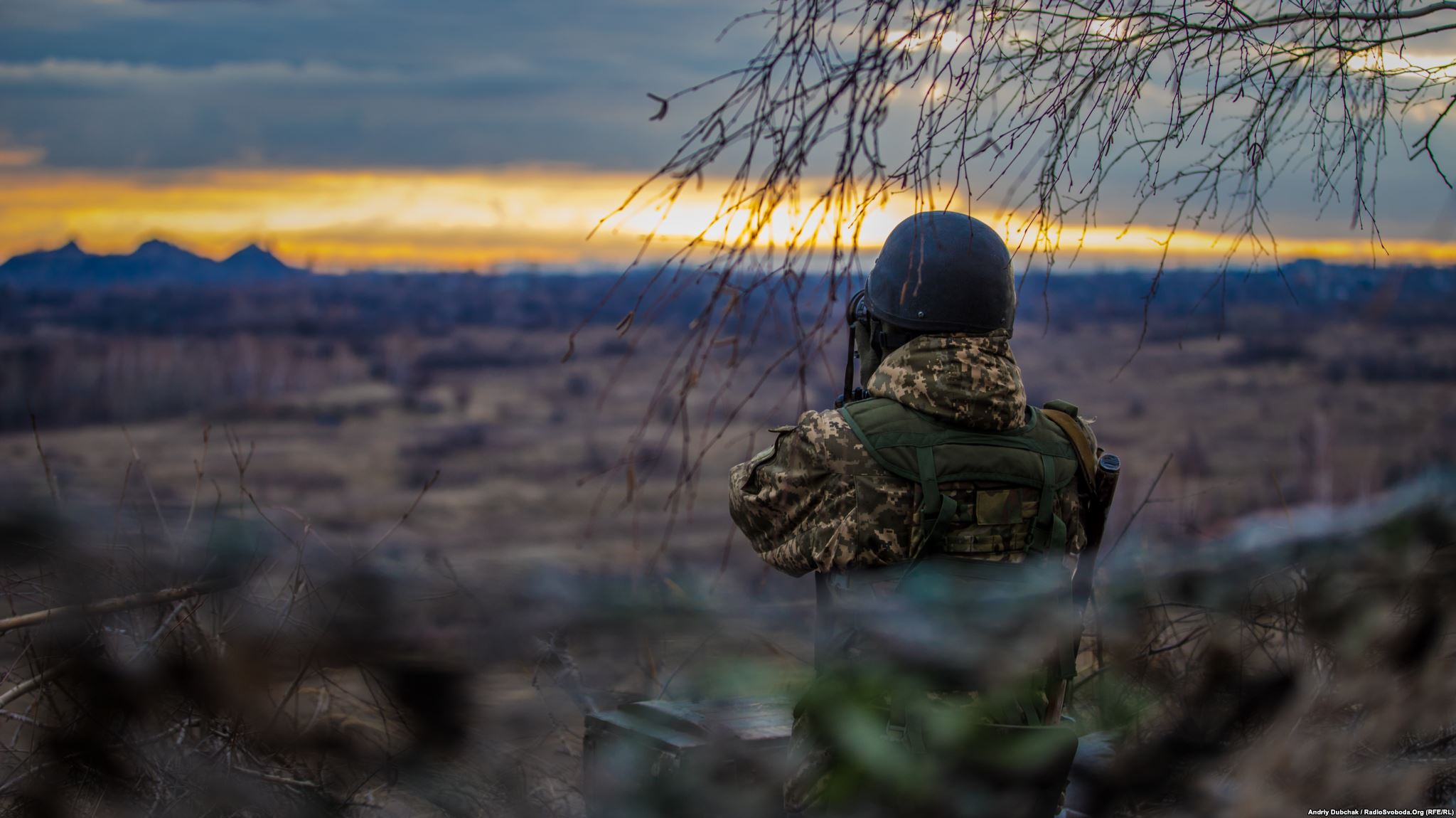The entire Donbass steppe is interspersed with waste slagheaps, which create their frame geometry on the horizon. For years, Donbass miners have created piles of rock dumps, creating a new Donbas relief. Currently, there is a rock structure of great heights near the city of Zolote, located in the Luhansk region and was taken under the control of Ukrainian mountain stormtroopers who observed the entire situation.
In the middle of the night, we climbed to an artificial height. Still, at the foot of the mountain, we were hindered by the presence of mud. The darkness pervaded around us, a darkness that could be described as pitch black. Donning all of the reporter’s “equipment”—body armor, helmet, battery bag, tripod, and, how we can do without it, – a camera—we climbed the path that was tucked in the mud, clinging with bare hands to the swamp. We could barely fall down with all that equipment, so we ‘stormed’ the slagheap for half an hour together with the soldiers who took over the night guard.
As darkness overtook us, the war gained much traction. Here, we showed film, even though the evening seems surprisingly silent, and there was no one suspicious sound. Meanwhile, we constantly communicated with the those who kept watch for us on the slagheap .
The soldiers told us about the regular bombardment of the “observer.” “From time to time, almost everything “came flying” here: bullets, mines, grenades, and shells. The snipers constantly fired during the past few days,” they told us.
Then, the conversation drifted and touched on a variety of subjects: from animals in positions and camouflage nets to politics and information pertaining to warfare. One of the soldiers pulled out a smartphone and showed the others a text message sent by Russian hybrid forces that read: “Peaceful citizens can die from your weapons.”
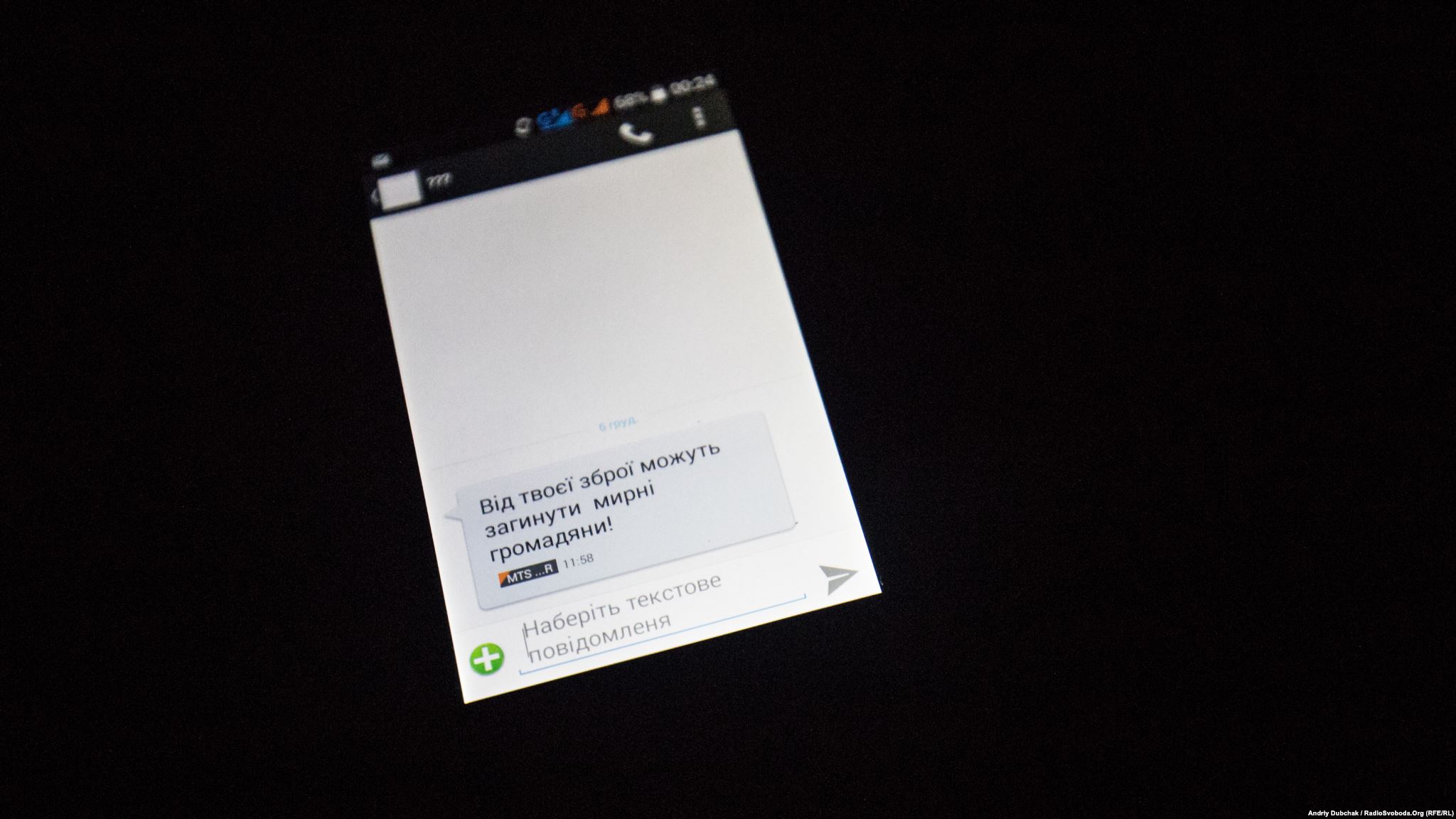
The front line remained relatively quiet, and, at first glance, it appeared to be a safe environment. The military showed the enemy’s position through the night viewer. Between the two slagheaps, in the lowlands, the village became dubbed the “gray zone.” The militants went down there and fired on the Ukrainian camp from that location.
We were also given the opportunity to observe the terrain through the thermal imager, which helped us discern the tip of the slagheap held by the rivals of Russian hybrid forces; it appeared completely red, that is, it looked much warmer than the environment. As we discovered later, such an appearance manifested from the thermal processes are still occurred inside. Below, in the middle of the “gray zone” houses, animals such as cats and dogs could be seen on the move. The windows and chimneys of some buildings also appeared to be reddish in color as a result of the heating. There, under the fire, people were still alive.
In the absence of bellicose engagements, and in the midst of complete darkness, we decided that we could do nothing but sleep and awake at dawn. We were taken to an empty dugout that was 1.5 meters by 1.5 meters and contained a small oven. Although the dugout was designed for one person, all three of us managed to stay in there, two correspondents and one military Vyacheslav. We slept in close corridors to one another in the same way we did in the army. In the middle of the night, we fired up a stove as a means to provide heat for us during the bitter cold that defined December in the yard.
Finally, morning came, and it was bitterly cold; a damp wind penetrated our very bones. We yearned for coffee and tea, but such commodities were not available there. The sunrise opened across the landscape of the outskirts of the former Stakhanov (now Kadyivka) and Zolota.

In the morning, standing in the position sheltered with bags filled with rock around us, Olexander repeatedly pressed his thumb on the cartridge of the gun magazine, filled with rounds of ammo.
– Do you want get home?
Sasha smiles:
– Home is boring. And there are boys here. Normally.
Sasha is 20 years old, and he often used word “normal” in quotidian conversation.
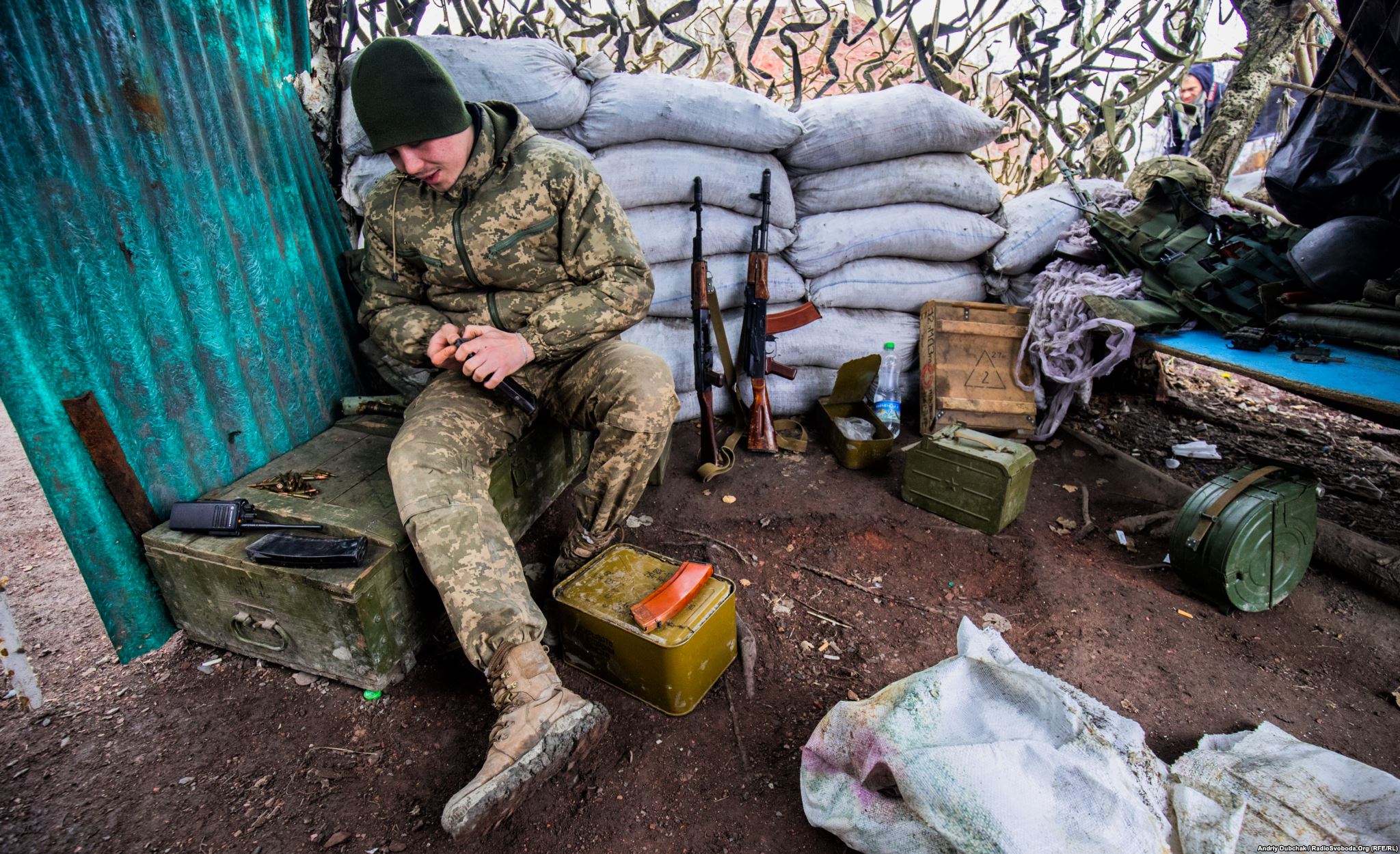
He watched and monitored his enemy all night and noted that he recently saw how “two enemy slagheap s of militants fought against each other.”
“They shoot from one slagheap in another with DSC (Machine-gun large-caliber machine gun of Degtyarev-Spagin). Then that responded with a fire from a Kalashnikov machine-gun. What they did not divvy up with each other is unknown,” says Sasha.
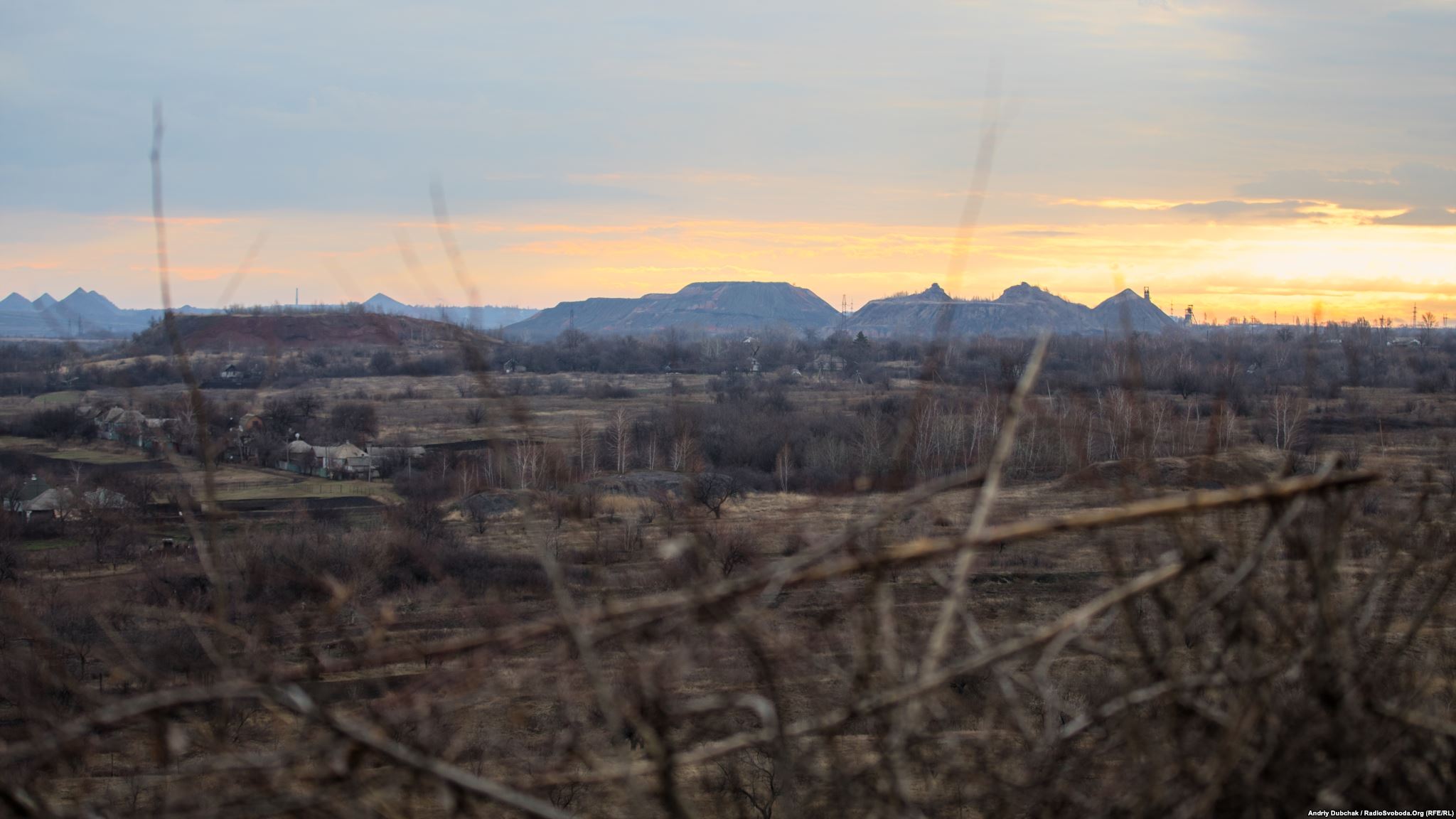
We continued to ask:
– What do you think has changed in the country since 2014?
He smiled.
– I cannot say, because in 2014, I only finished the school.
He laughed a lot of joked frequently.

Pretty neat, clean (as for war on the slagheap ) positions. In the morning, everything was visible: recessed shelters and trenches, “observers,” even the positions of the enemy. Morning, like the previous night, remained quiet. Only the gusts of wind are heard and radio sets on the equipage of soldiers rattled on.
«4–5–0», – one could hear, which meant that everything is calm all around.

Another Olexander joined our conversation, and he spoke calmly, confidently, and logically. He began participating in the war in 2014 with the first wave of mobilization. Three months later, he was dismissed for some reason. In 2015, he was again mobilized along with the sixth wave of mobilization. He served 15 months during this tour and remained for a half-year contract. After that, he returned home for six months but could not stand civilian life, which is why he returned to the front line.
– I will ensconce myself in the military arts.
One of the main problems he discussed was the unprofessional nature of the selection process for future members of the military. It was impossible to re-educate the soldiers who were already on the front line.

In the conversation, the men mentioned the “treachery of the enemy” at the foot of the slagheap , where a small village stretched and was now a “gray zone.”
“They have the following advantage: they enter the village and shoot from there. We cannot shoot there, in any case, because it is a village and there are people. And they (fighters – Ed.) use it. They can go to the village, shoot at us and go. We can only sit down and that’s all,” says 20-year-old Olexander.
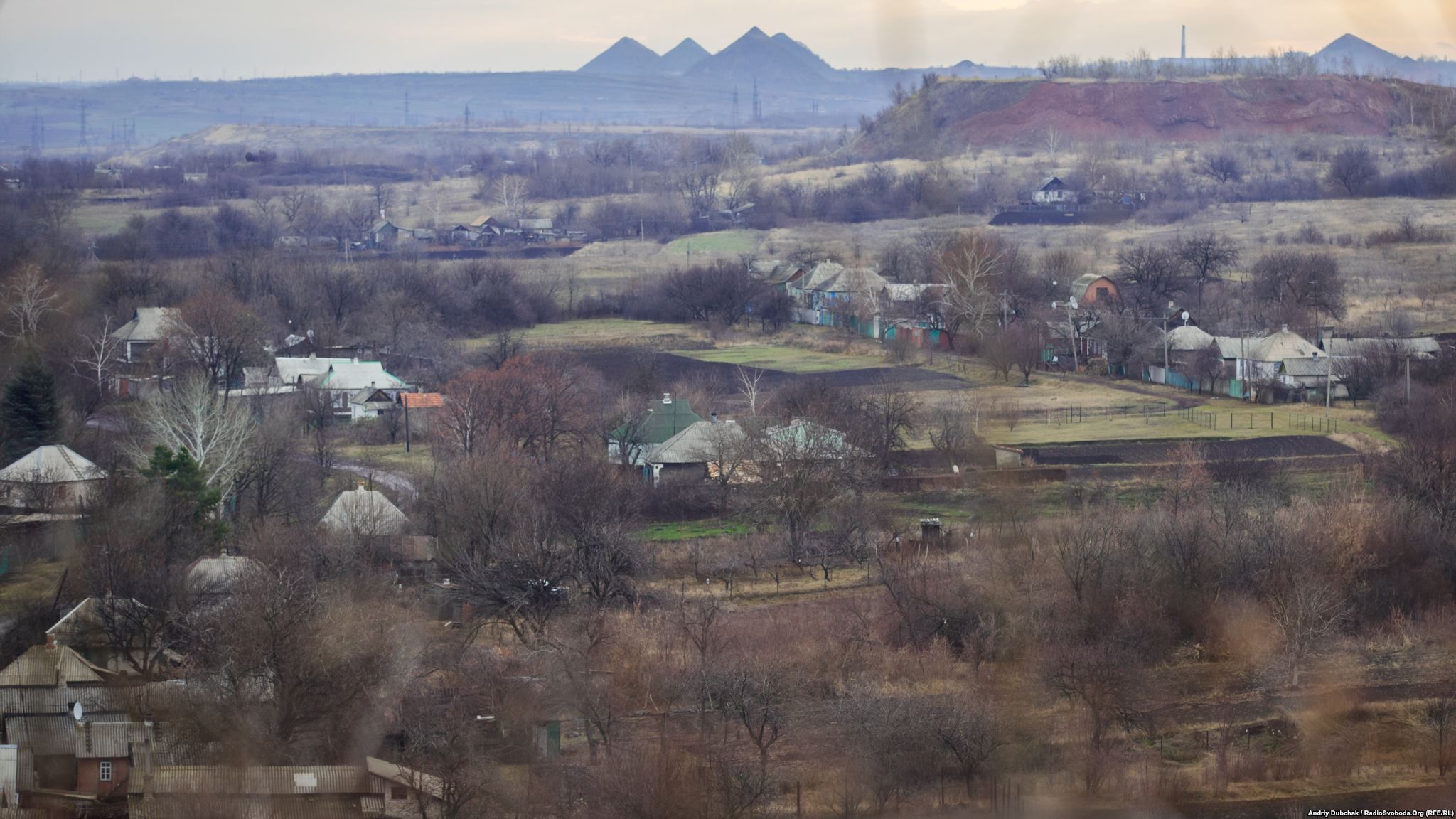
Us five had a good morning talk, where there was laughter, and we made soldier jokes, while silence remained on the horizon. In one second, this idyllic scenery was interrupted by a loud bout that sounded like a whip on the ear, and a resonant bang. The bursting ball of the enemy sniper hit in the bags as we stood in the position.
The air smelled like burned explosives. After the shot, Vyacheslav, who accompanied us, unsuccessfully sat down on his injured knee. Nervous curse, laughter, and trampling of five fighters crawled along the ground into the shelter. While the sound of the explosion dispelled in the ears of the soldiers, the soldiers said that such an occurrence is a salient feature in the life of soldiers during times of war. This time, the sniper missed, because the distance for an accurate shot proved too long. We realized that everything happens spontaneously here, like the enemy’s fire.
Someone reported on the radio set that he saw movement near civilian houses, which was most likely the movement of a sniper.
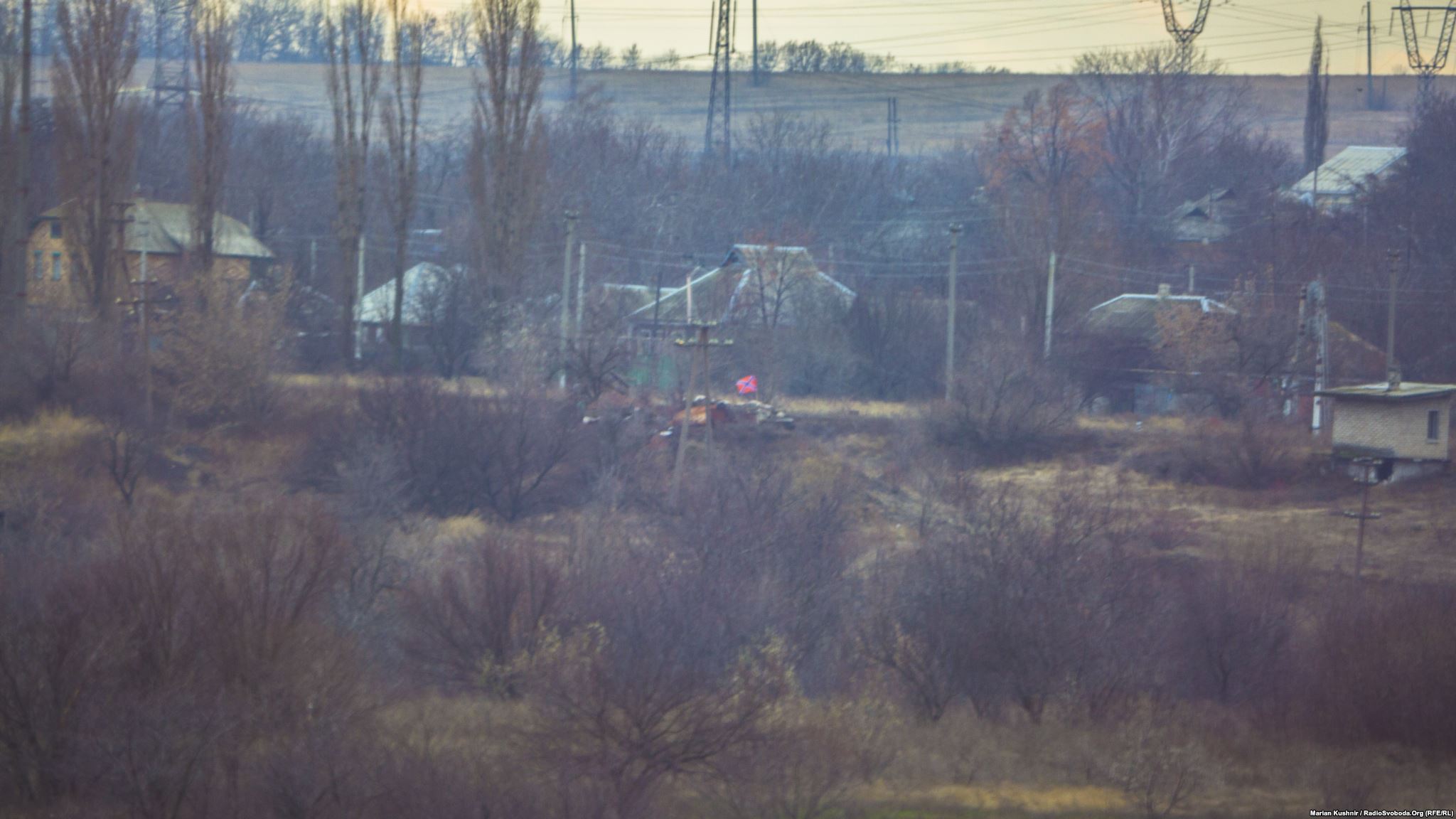
We returned from our positions to the command-observation point. On the way, we overcame an open area and moved at a celeritous pace.
Subsequently, Vyacheslav, who accompanied us and brought up the rear, admitted: “You know, once in the back, for the first time in the war, I felt a view full of hatred.”
He is in the ATO zone since 2014.
Then again the muddy, steep slopes, and small birches.
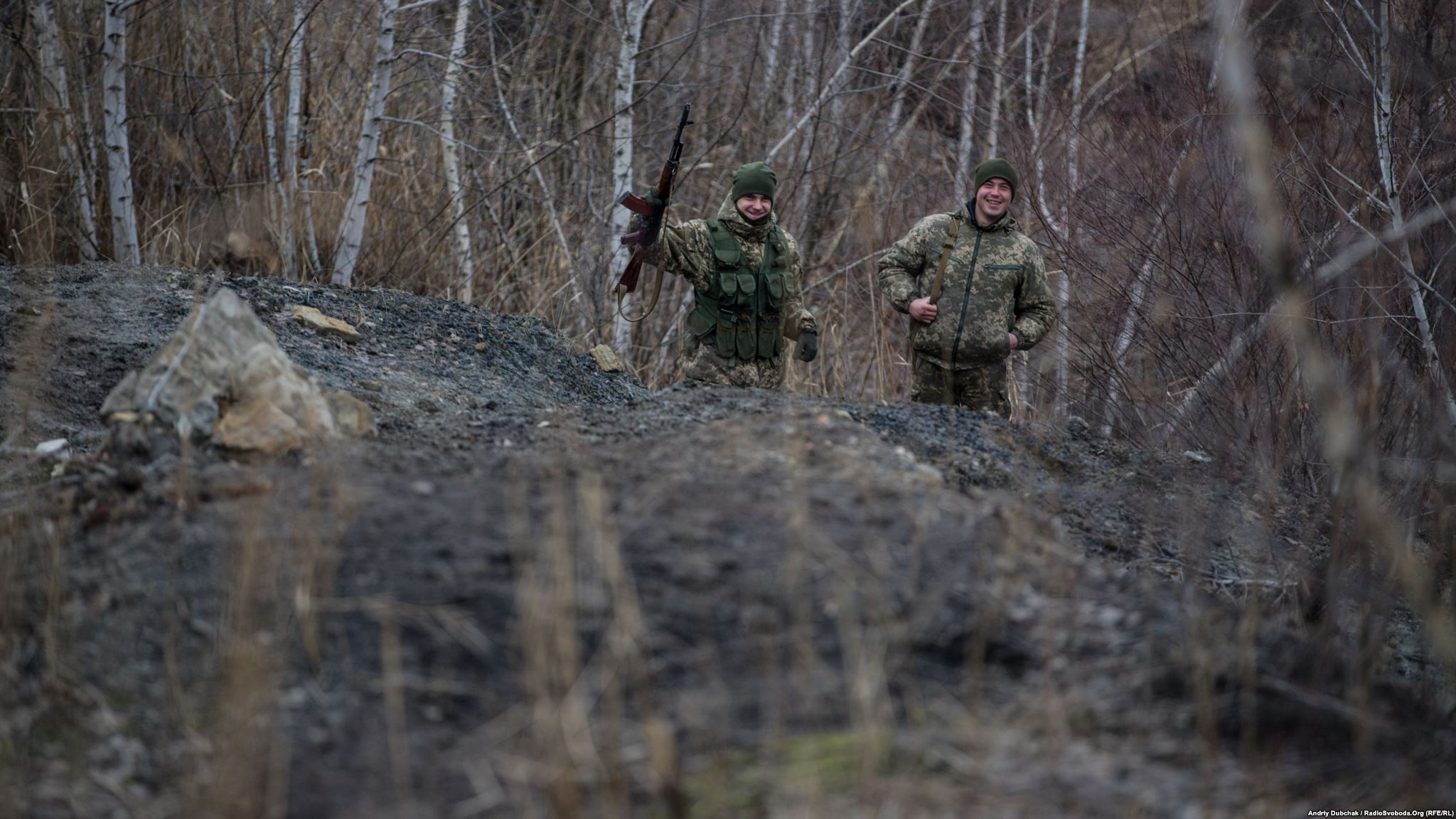
Already at the foot of the slagheap , we saw a memorial dedicated to the dead Aidar battalion military. In 2014, at this site, as the soldiers say, 82-gauge mine had fallen. Two reconnaissance officers of the Aidar battalion were killed in the explosion.
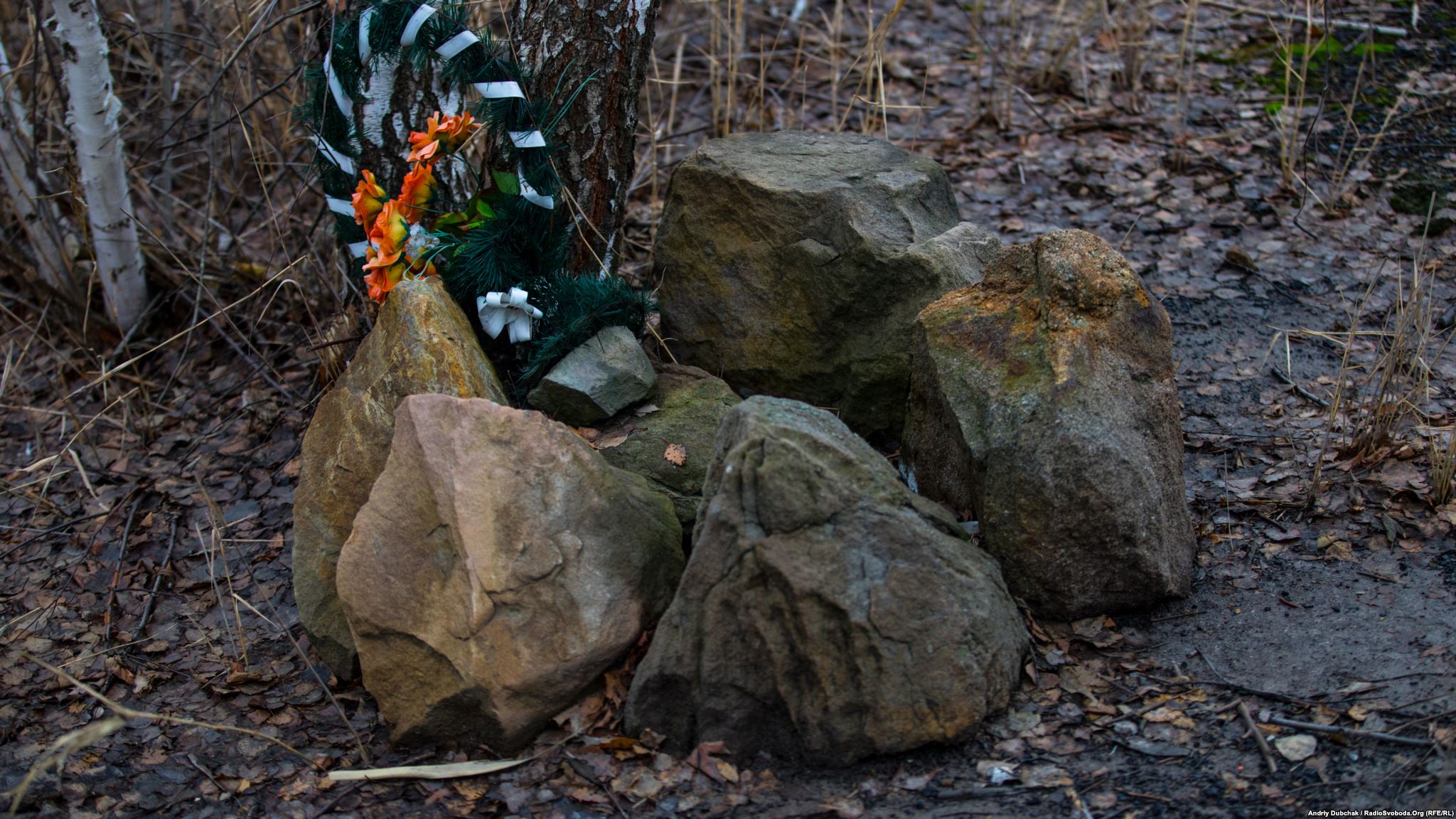
In the place of disposition, we enjoyed a delicious dinner: soldier’s buckwheat, cheese, sausage, homemade cucumbers, and sweet tea. The entire process of eating, however, was relatively silent. We noted that the night passed calmly, and we remembered the morning sniper shot that broke such serenity.

- In a few days later one of the Olexander (28 years old) was seriously wounded in the head by enemy sniper bullet. For now he still goes a long rehab….
(to be continued)
Afterword
Within a few days, Radio Liberty correspondents visited many of the frontline positions under Popasna, which were under the control of a separate mountain-assault brigade. Given the considerable number and versatility of the footage, it was decided to present the story of the brigade in three separate but related publications:
